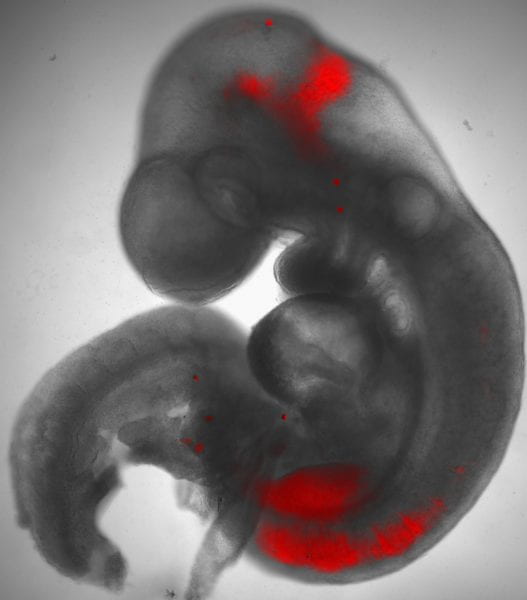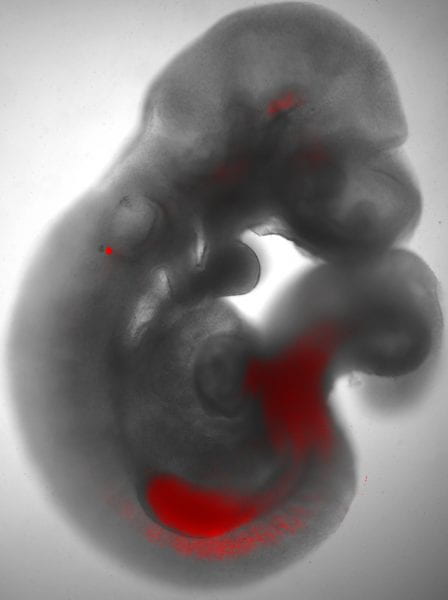RESEARCH
♥ Stem Cell Approaches to Cancer Research
 More than four decades of cancer research has greatly advanced our understanding of cancer biology and led to the development of new cancer therapeutics. The war against cancer is however far from over as several obstacles remain that are hindering the translation of basic cancer research achievements into clinical applications. Although studies of animal models have provided great insights into cancer biology, one major limitation stems on existing experimental systems, which fall short in demonstrating concordance with human studies. Modeling human genetic disease has recently become feasible with the technology of human stem cells, including embryonic stem cells (ESCs), induced pluripotent stem cells (iPSCs) and adult stem cells.
More than four decades of cancer research has greatly advanced our understanding of cancer biology and led to the development of new cancer therapeutics. The war against cancer is however far from over as several obstacles remain that are hindering the translation of basic cancer research achievements into clinical applications. Although studies of animal models have provided great insights into cancer biology, one major limitation stems on existing experimental systems, which fall short in demonstrating concordance with human studies. Modeling human genetic disease has recently become feasible with the technology of human stem cells, including embryonic stem cells (ESCs), induced pluripotent stem cells (iPSCs) and adult stem cells.
We have developed novel experimental approaches for studying initiation and progression of cancers, using various developmental stages of human cells through differentiation of stem cells and perturbing the cancer genes frequently altered in these diseases. Our tractable and feasible experimental systems enable studying cancer in much greater depth than has been possible before, using genetically defined human cells that can be characterized at the single cell level and can be widely adopted to ask a broad range of questions about the origins and control of the devastating diseases (J. Exp. Med. 2019, Nature Medicine. 2017).
♣ Tissue Engineering via de-/recellularization
 Recent biotechnology advancements make it possible to isolate natural acellular matrix with preserved extracellular matrix (ECM) and normal three-dimensional tissue architecture, providing a potential new approach for engineering more physiological relevant tissue models.
Recent biotechnology advancements make it possible to isolate natural acellular matrix with preserved extracellular matrix (ECM) and normal three-dimensional tissue architecture, providing a potential new approach for engineering more physiological relevant tissue models.
Taking advantage of this technology, we have developed the first organotypic model of human colon by decellularizing normal human colon tissue under conditions that retain the colon’s complete geometry with a well-preserved ECM, a relatively integral vascular network and intact muscularis mucosa, followed by reseeding via microinjection with primary colonic stem cells and other major types of colonic cells in their physiological locations. This ex vivo system can provide single-cell resolution and time-lapse sensitivity for anatomically tracking disease steps during colorectal cancer (CRC) progression. The feasibility and significance of this ex vivo CRC model have been demonstrated, combined with Sleeping Beauty transposon mutagenesis system, in identification of genes that cooperate with mutant APC gene in driving invasive neoplasia (Nature Biotech. 2016; Cell Stem Cell 2016; Lab on a Chip. 2018).
♠ Molecular Engineering via Chemokine Axis
 Chemokines are a family of secreted ligands that play important roles for trafficking lymphocytes in the body to different organs. Leveraging the chemokine axis, we have engineered surgery-free mouse models with orthotopic human tumors and metastases. We further derived human orthotopic CRC tumors in immunocompetent mice
Chemokines are a family of secreted ligands that play important roles for trafficking lymphocytes in the body to different organs. Leveraging the chemokine axis, we have engineered surgery-free mouse models with orthotopic human tumors and metastases. We further derived human orthotopic CRC tumors in immunocompetent mice  by microinjecting the chemokine receptor CCR9-expressing cancer initiating cells into early-stage mouse blastocysts, which induces central immune tolerance perhaps by human cell trafficking through mouse fetal thymus. These new models are expected to become valuable tools for investigation of the biology of cancer metastasis and therapeutics (Nature Biotech. 2015; Cell Stem Cell 2013; J. Clin. Invest. 2012).
by microinjecting the chemokine receptor CCR9-expressing cancer initiating cells into early-stage mouse blastocysts, which induces central immune tolerance perhaps by human cell trafficking through mouse fetal thymus. These new models are expected to become valuable tools for investigation of the biology of cancer metastasis and therapeutics (Nature Biotech. 2015; Cell Stem Cell 2013; J. Clin. Invest. 2012).
